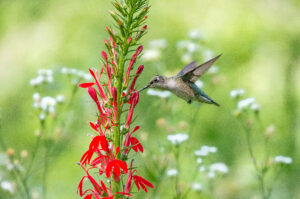
Cardinal Flower: A Vibrant Native Plant for Wet Soils
Cardinal flowers are striking plants that add a pop of vibrant red to gardens and natural areas. These tall, slender perennials bloom in late summer
Please be aware that all shipping will be suspended on December 22 and will resume January 5. Dismiss
Skip to contentGround shipping is currently paused. Local deliveries throughout Long Island will continue as usual. Pre-orders for fall are now open. Non-local orders will begin shipping again in early September. Click here to learn more.
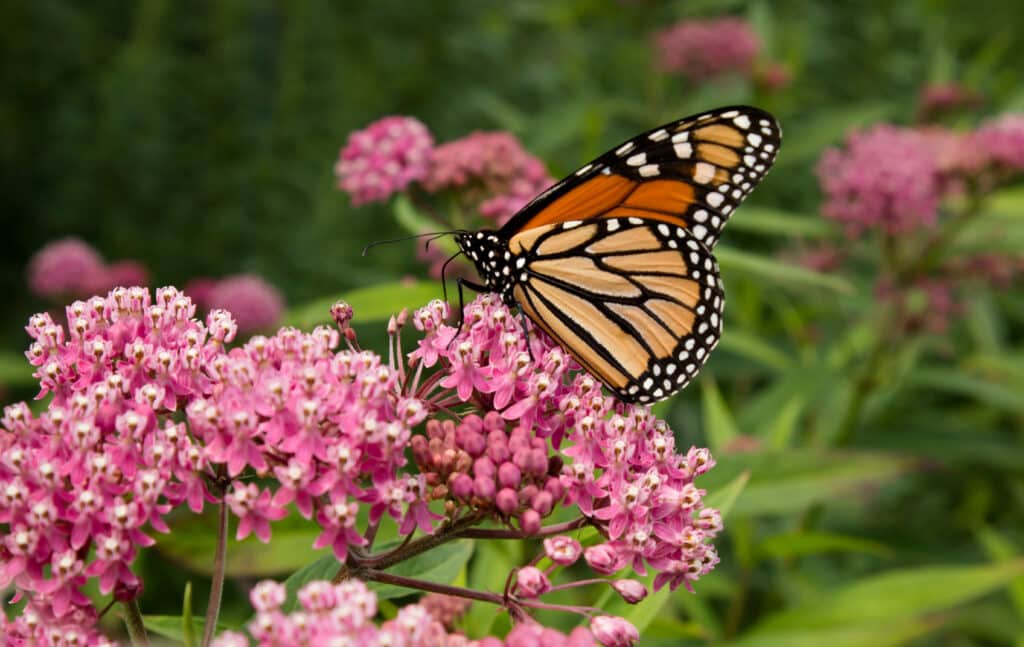
Rose milkweed is a beautiful native plant that can add color and life to your garden.
This perennial flower, also known as Asclepias incarnata, grows in many parts of North America.
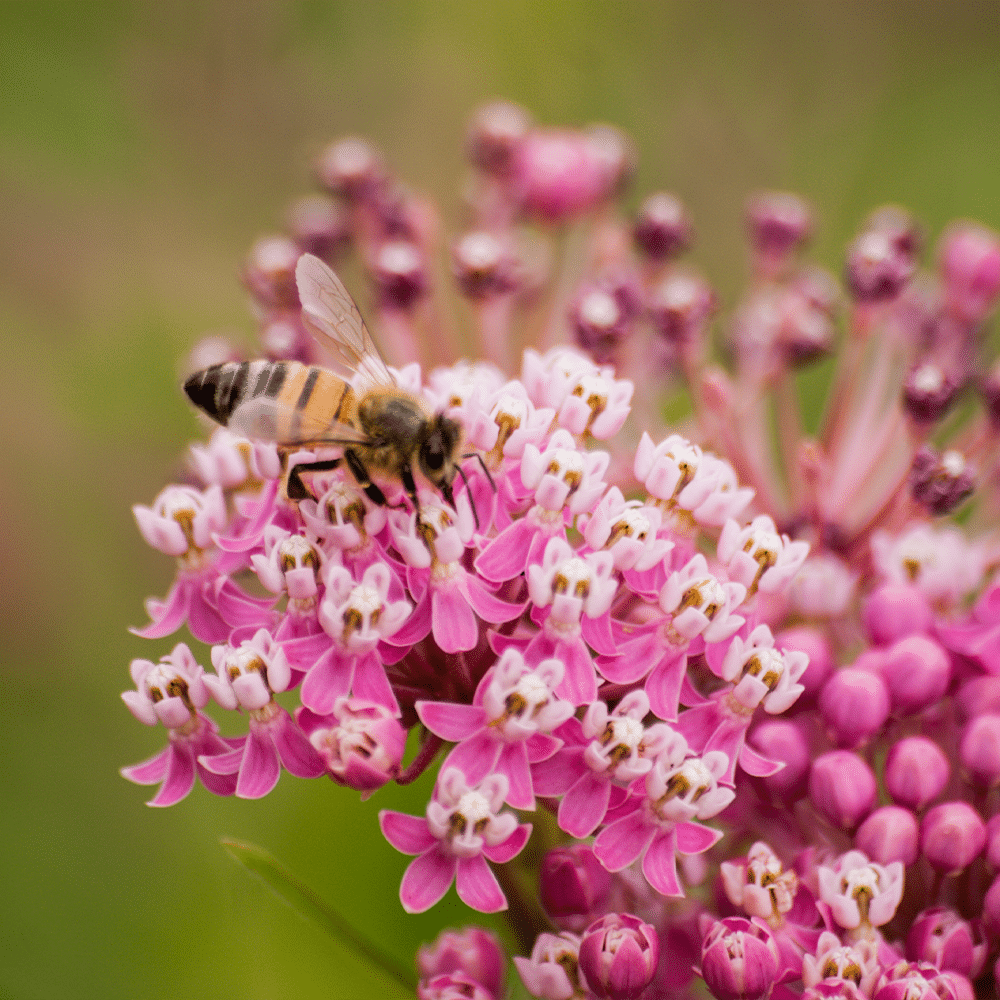
Rose milkweed plays a crucial role in supporting monarch butterflies.
The plant’s leaves provide food for monarch caterpillars, while its pink flowers offer nectar to adult butterflies.
By planting rose milkweed, you can help these important pollinators thrive.
Besides its ecological benefits, rose milkweed is easy to grow and maintain.
It attracts other beneficial insects and can tolerate both wet and dry soil conditions.
Adding this versatile plant to your garden can create a stunning display while supporting local wildlife.
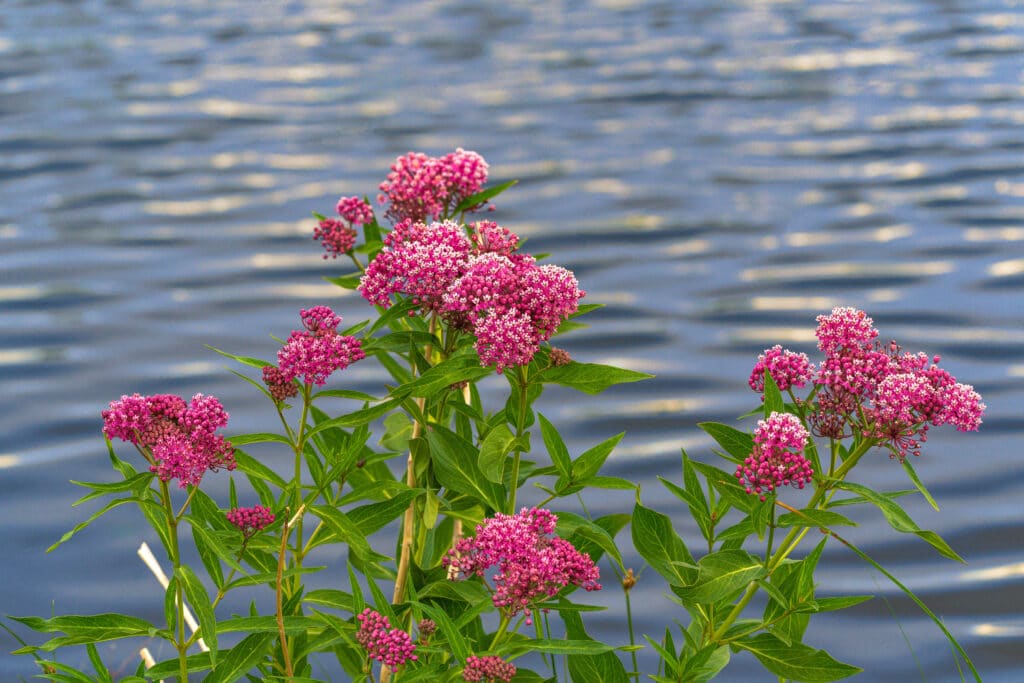
Rose milkweed is a striking wildflower native to North America. It has unique features that make it stand out in gardens and natural habitats. Let’s explore its key botanical characteristics.
Rose milkweed belongs to the genus Asclepias. Its scientific name is Asclepias incarnata.
It’s part of the Apocynaceae family, also known as the dogbane family. This family includes many plants with milky sap.
Rose milkweed is closely related to other milkweed species like common milkweed and butterfly weed.
You’ll find rose milkweed to be a medium-sized plant. It typically grows 3 to 5 feet tall.
The flowers are pink to mauve and appear in clusters at the top of the plant. These clusters can be 2 to 4 inches wide.
The blooms have a sweet scent that attracts butterflies and other pollinators.
Rose milkweed flowers from June to August in most areas.
Rose milkweed is an herbaceous perennial. This means it dies back to the ground each winter and regrows in spring.
The plant forms clumps that grow wider over time. You’ll notice new shoots emerging from an elevated central crown each year.
Rose milkweed prefers wet soil but can adapt to average garden conditions. It grows best in full sun but can handle some shade.
The leaves of rose milkweed are lance-shaped and grow opposite each other on the stem. They’re dark green and can be 3 to 6 inches long.
The leaf edges are smooth, not toothed.
The stems are sturdy and usually don’t need staking. They’re green or slightly reddish and grow upright.
When broken, the stems release a milky sap. This sap can irritate skin, so it’s best to wear gloves when handling the plant.

Rose milkweed thrives in wet areas across much of North America. It grows best in moist soil and sunny spots.
Rose milkweed is native to eastern and central North America.
You’ll find it from Ontario and Quebec down to Florida, and west to Texas and North Dakota. It’s common in the Great Plains and Midwest. The plant has also spread to some western states.
In Canada, rose milkweed grows in southern parts of Manitoba, Ontario, and Quebec. It’s less common in the Maritime provinces. The plant doesn’t naturally occur in western Canada or the far north.
Rose milkweed loves wet, sunny places. You’ll often spot it in:
The plant needs moist soil to thrive. It does best in areas that are wet year-round or flood often. Rose milkweed can handle some standing water.
Full sun is key for this plant. It grows tall and produces more flowers in sunny spots.
Rose milkweed can grow in part shade, but it may flop over or bloom less.
While it likes wet soil, rose milkweed can adapt to drier areas. You might see it in ditches, fields, or roadsides.
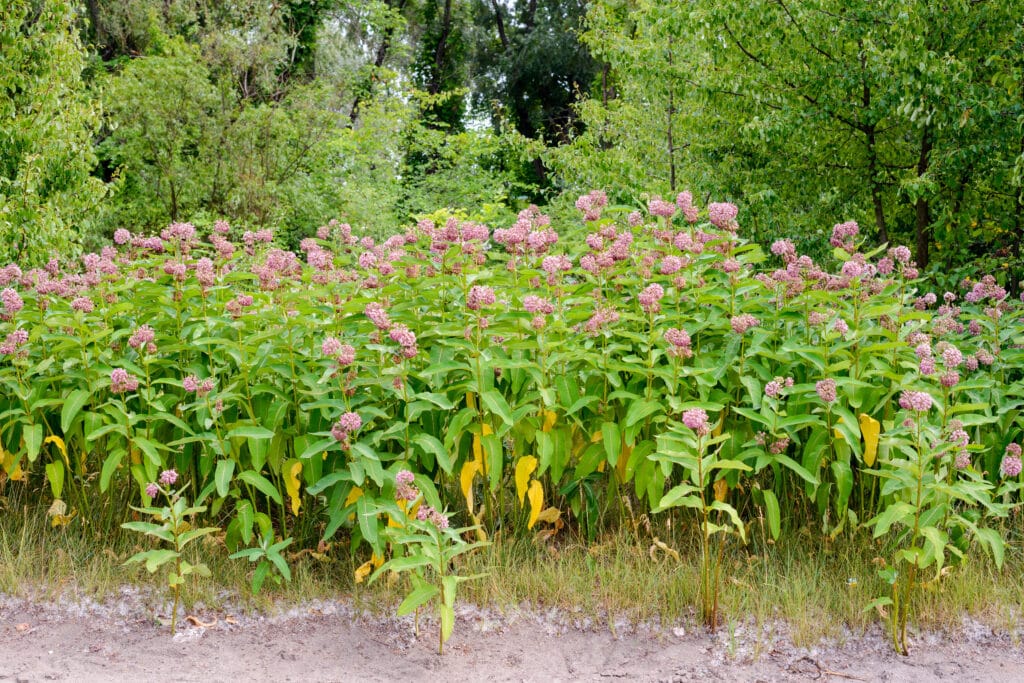
Rose milkweed is easy to grow and care for. It thrives in many conditions and attracts pollinators to your garden.
Plant rose milkweed in spring after the last frost.
Space plants 18-24 inches apart. Dig holes twice as wide as the root ball and deep enough to cover the crown.
Place the plant in the hole and fill with soil. Water thoroughly after planting.
Add a layer of mulch around the base to retain moisture and suppress weeds.
Rose milkweed can also be grown from seed.
Sow seeds directly in the garden in fall or early spring. Press seeds lightly into the soil but don’t cover them, as they need light to germinate.
Rose milkweed prefers full sun but can tolerate partial shade.
It needs at least 6 hours of direct sunlight daily for best growth and flowering.
Water your plants regularly, especially during dry spells.
Keep the soil consistently moist but not waterlogged. Milkweed is drought-tolerant once established but benefits from regular watering.
In hot climates, provide some afternoon shade to protect plants from intense heat.
This helps maintain soil moisture and prevents leaf scorch.
Rose milkweed grows best in moist, well-draining soils. It adapts to various soil types but prefers rich, loamy soil.
Improve your soil by adding organic matter like compost before planting. This enhances drainage and provides nutrients.
The ideal soil pH for rose milkweed is 6.0 to 7.0, slightly acidic to neutral.
If your soil is too alkaline, add sulfur to lower the pH.
Avoid heavy clay soils that stay wet for long periods.
If you have clay soil, mix in sand and organic matter to improve drainage.
Rose milkweed is a low-maintenance plant. It doesn’t require frequent pruning or fertilizing.
Deadhead spent flowers to encourage more blooms and prevent self-seeding.
Cut back stems to about 4 inches above ground level in late fall or early spring.
Watch for aphids and treat with insecticidal soap if needed. Remove any diseased or yellowing leaves promptly.
Division isn’t necessary but can be done every 3-4 years to rejuvenate plants. Divide in early spring when new growth appears.
Avoid using pesticides near milkweed to protect monarch caterpillars and other beneficial insects that feed on the plant.
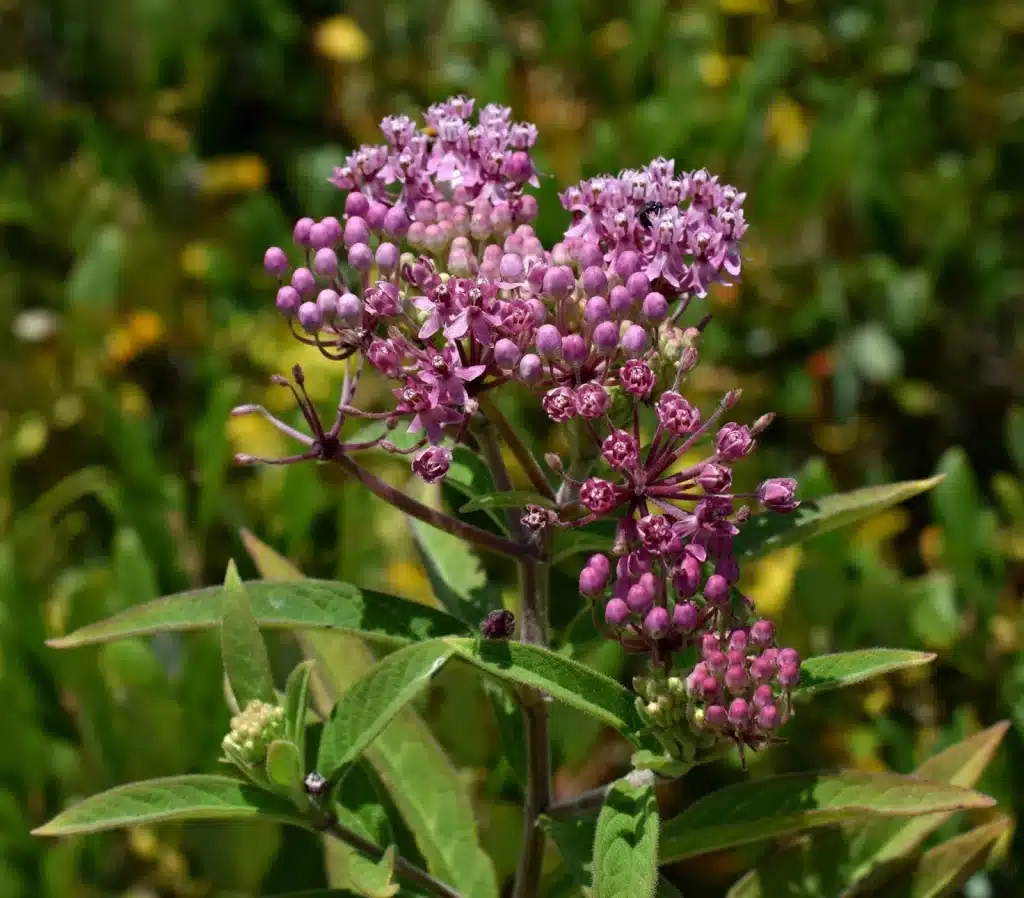
Rose milkweed has unique reproductive features that help it thrive. Its flowers attract pollinators, while its seeds spread easily on the wind.
Rose milkweed flowers grow in clusters called umbels. Each flower has five petals that curve back, revealing a central crown. The petals are usually pink or light purple.
You’ll notice the flowers have a sweet scent. This attracts pollinators from far away. The nectar is hidden deep inside the flower.
Bees, butterflies, and other insects pollinate rose milkweed.
As they feed on nectar, pollen sticks to their legs and bodies. When they visit another flower, some pollen rubs off.
The flower’s structure makes pollination tricky.
Insects must put their legs in the right spot to pick up pollen sacs. This ensures efficient pollen transfer between plants.
After pollination, rose milkweed produces seed pods. These long, green pods split open when ripe. Inside, you’ll find many flat seeds attached to silky fibers.
The seeds have “parachutes” that catch the wind. This helps them float far from the parent plant. One plant can release hundreds of seeds.
Seeds often land in open areas where new plants can grow easily. This spreading method helps rose milkweed colonize new habitats.
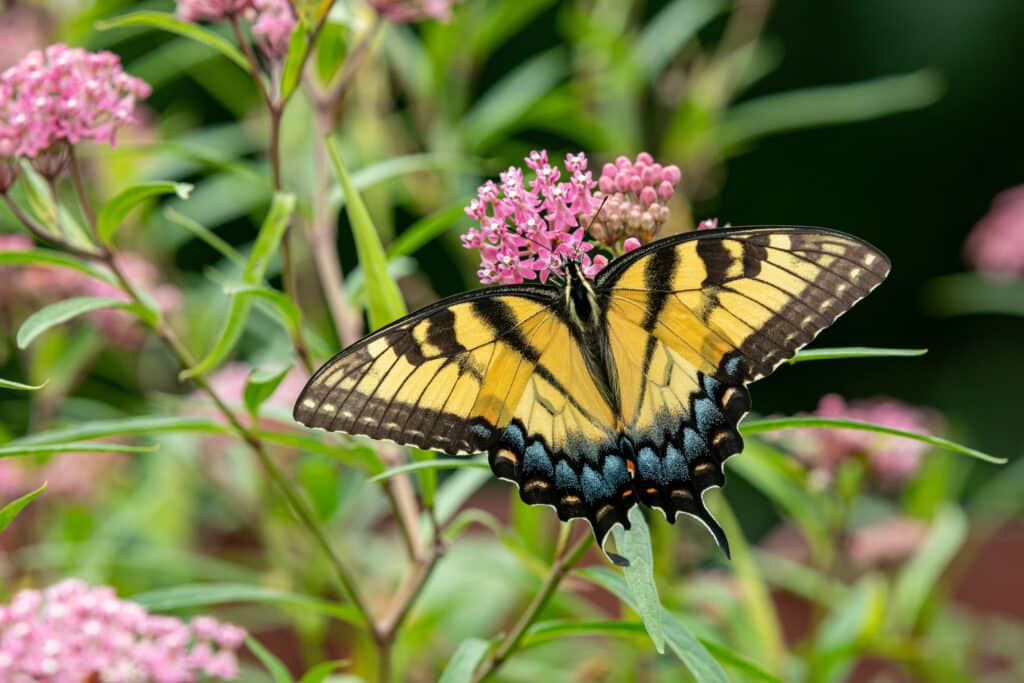
Rose milkweed plays a vital role in many ecosystems. It supports various wildlife and helps restore native habitats. Let’s explore its key interactions and conservation importance.
Rose milkweed is a magnet for butterflies.
You’ll often see monarch butterflies fluttering around these plants. They lay their eggs on the leaves, which become food for caterpillars.
Other butterflies like swallowtails also visit rose milkweed for nectar.
Aphids are common pests on rose milkweed. While they can damage the plant, they also attract beneficial insects.
You might spot ladybugs or lacewings eating the aphids. If aphids become a problem, you can use neem oil as a natural solution.
Bees and other pollinators love rose milkweed flowers. The plant’s nectar is a rich food source for these important insects.
By growing rose milkweed, you’re helping support local pollinator populations.
Rose milkweed is a key plant for butterfly gardens.
You can easily add it to your yard to create a butterfly-friendly space. It’s especially important for monarch butterflies, whose numbers have dropped in recent years.
Native habitats benefit from rose milkweed too.
The plant helps restore areas that have been disturbed or developed. You’ll often see it used in prairie restorations or along roadsides.
Growing rose milkweed supports local ecosystems.
It provides food and shelter for many creatures beyond just butterflies. By planting it, you’re helping to maintain biodiversity in your area.
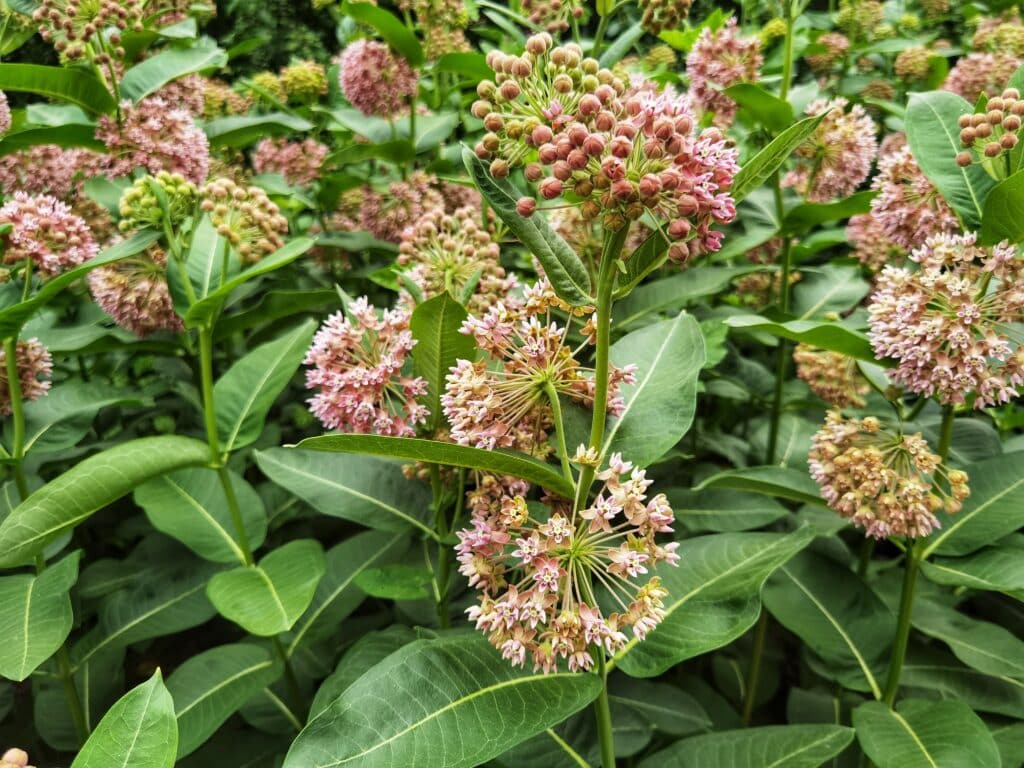
Rose milkweed has many practical uses in gardens and kitchens. This versatile plant offers beauty and function for both ornamental and culinary purposes.
Rose milkweed adds a pop of color to your garden. Its pink flowers bloom from midsummer to early fall, attracting butterflies and bees.
You can plant it in borders or butterfly gardens for visual appeal.
Rose milkweed grows well in full sun and moist soil. It reaches 2-4 feet tall, making it perfect for the middle of flower beds.
The plant spreads easily, so you may want to contain it.
For cut flowers, snip stems when half the flowers are open. They’ll last about a week in a vase.
The vanilla-scented blooms make lovely bouquets.
Young shoots, leaves, flower buds, and seed pods of rose milkweed are edible. Harvest young shoots in spring when they’re 6-8 inches tall.
Boil them like asparagus for a tasty side dish.
You can eat the leaves raw in salads or cook them like spinach. Flower buds taste similar to broccoli when cooked.
Immature seed pods can be breaded and fried.
Be careful not to confuse rose milkweed with toxic plants. Always identify plants correctly before eating them.
Rose milkweed faces some obstacles to its growth and health. Pests and diseases can harm the plant if left unchecked.
Proper care helps prevent and manage these issues.
Aphids often attack rose milkweed. These tiny insects suck sap from stems and leaves.
You may spot them clustered on new growth.
To control aphids, spray plants with a strong stream of water. This knocks them off.
Neem oil is another good option. Mix it with water and spray on leaves.
It’s safe for beneficial insects but deters pests. Repeat weekly as needed.
Some herbivorous animals like deer may eat rose milkweed. Fencing your garden keeps larger pests out.
You can also try planting strong-smelling herbs nearby as a natural deterrent.
Rose milkweed is prone to fungal diseases in wet conditions. Good air flow between plants helps prevent this.
Space them about 2 feet apart when planting.
Water at the base of plants instead of from above. This keeps leaves dry and less likely to develop fungus.
Remove any dead or diseased parts right away.
Rose milkweed is drought-tolerant once established. Don’t overwater, as this can lead to root rot.
Let soil dry out between waterings. Add mulch around plants to keep moisture balanced.
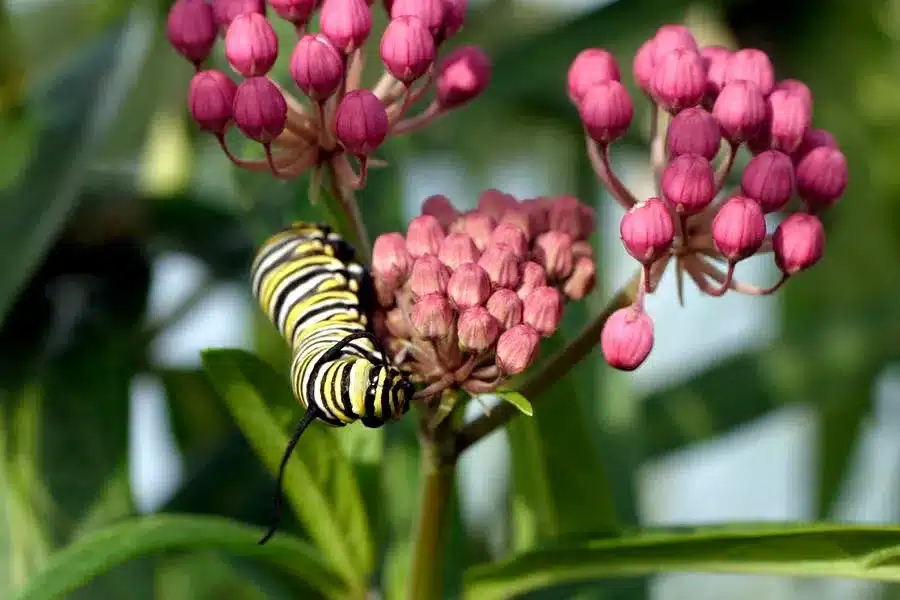
Rose milkweed belongs to a diverse group of plants with many related species. These plants share similar characteristics but have unique features that set them apart.
Common milkweed (Asclepias syriaca) is a close relative of rose milkweed. It grows up to 6 feet tall with broad, oval leaves.
The flowers are pinkish-purple and bloom in large, round clusters.
Common milkweed is found across most of North America.
This plant is vital for monarch butterflies. They lay eggs on its leaves and the caterpillars eat them.
The sap is toxic to many animals, which protects the monarchs that feed on it.
Common milkweed spreads easily through underground roots. It can take over gardens if not controlled. Many farmers see it as a weed in crop fields.
Butterfly weed (Asclepias tuberosa) is a shorter milkweed variety. It grows 1-3 feet tall with narrow leaves.
The flowers are bright orange and appear in flat-topped clusters.
This plant thrives in dry, sandy soils. It’s drought-resistant and does well in full sun.
Butterfly weed attracts many pollinators, including:
Unlike other milkweeds, butterfly weed has no milky sap. It’s also less aggressive in spreading. This makes it a popular choice for gardens.
The Asclepias genus includes over 140 species. Some other notable varieties are:
Pink milkweed (A. incarnata ssp. pulchra) is a subspecies of swamp milkweed. It has deeper pink flowers and narrower leaves.
These species vary in size, flower color, and habitat needs. All provide food for monarch caterpillars and nectar for adult butterflies.
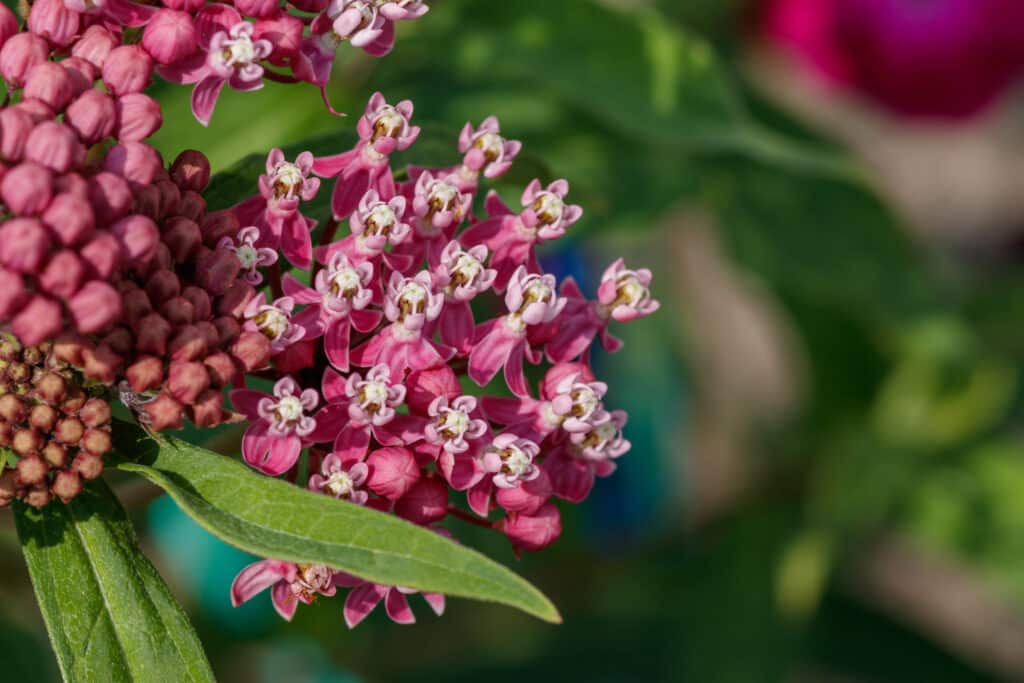
Rose milkweed faces several threats but also benefits from protection efforts. Its status impacts butterfly populations, especially monarchs.
Habitat loss puts rose milkweed at risk. As wetlands and prairies disappear, so do these plants.
Pesticides harm milkweed and the insects that rely on it.
Climate change shifts where milkweed can grow. This affects monarch caterpillars that feed on the leaves.
Invasive plants crowd out native milkweeds in some areas.
Roadside mowing often removes milkweed plants. This reduces food for butterflies. Over-collection by gardeners can damage wild populations in some places.
Many groups work to save rose milkweed. They plant it in gardens and natural areas. This helps butterfly populations recover.
You can join milkweed seed collection programs. These efforts spread native milkweeds to new areas.
Some states list rose milkweed as a wetland indicator species. This gives it extra protection in certain habitats.
Highway departments now delay mowing in some areas. This lets milkweed grow and produce seeds.
Butterfly gardens at schools and parks often include rose milkweed. These plantings teach people about its importance.
Rose milkweed is a beautiful and beneficial plant that attracts pollinators. Here are some common questions about growing and using this species.
Water rose milkweed deeply but infrequently. Allow the soil to dry out between waterings.
Prune away dead or damaged stems in early spring.
Apply a thin layer of compost around the plants each year. Avoid using chemical fertilizers or pesticides.
Rose milkweed serves as a host plant for monarch butterflies. Its nectar attracts many pollinators like bees and hummingbirds.
You can use the silky floss from the seed pods in crafts. Some people eat the young shoots, flower buds, and immature seed pods.
Rose milkweed has broader leaves than swamp milkweed. Its flowers are a deeper pink color. Rose milkweed prefers drier soil conditions.
Swamp milkweed has narrower leaves and lighter pink flowers. It grows best in wet areas.
Rose milkweed thrives in full sun. It grows best in well-drained soil.
This plant tolerates drought once established.
You can grow rose milkweed in USDA zones 3-9. It adapts to many soil types but prefers sandy or gravelly soils.
Rose milkweed usually grows 2-4 feet tall. In ideal conditions, it may reach up to 5 feet in height.
The plant spreads 1-3 feet wide. It forms clumps that slowly expand over time.
You can buy rose milkweed seeds from native plant nurseries and online seed companies.
Some garden centers sell potted plants in spring.
Check with local native plant societies for sources. They may offer seeds or plants at member events.

Cardinal flowers are striking plants that add a pop of vibrant red to gardens and natural areas. These tall, slender perennials bloom in late summer
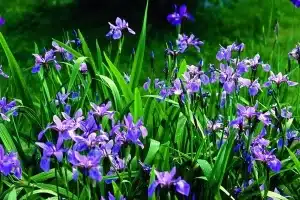
New York native plants are essential for sustaining local ecosystems. They provide food and shelter for wildlife while helping to maintain soil health. Incorporating native
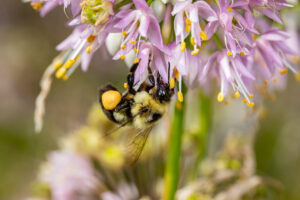
Nodding onion plant is a charming native plant found across North America. Its drooping pink or white flower clusters add a whimsical touch to gardens

Lupinus perennis, known as wild lupine, is a stunning native wildflower of eastern North America. This perennial plant adds a splash of color to meadows
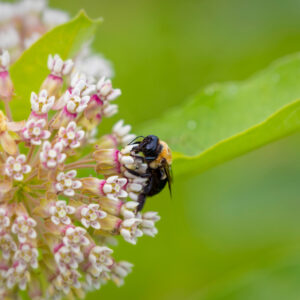
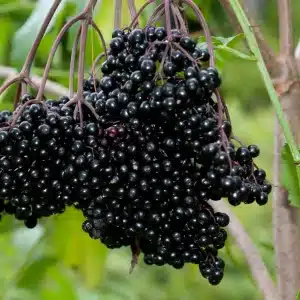
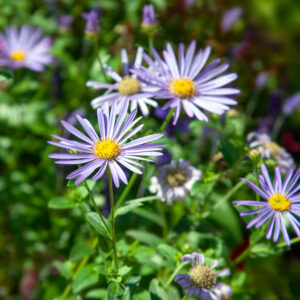

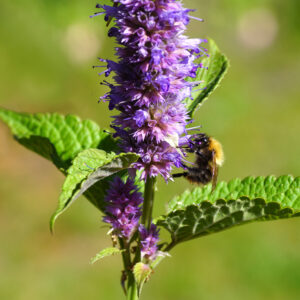
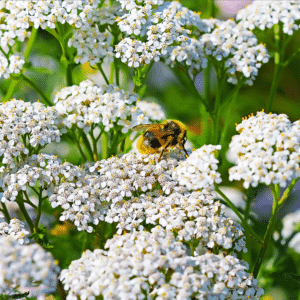
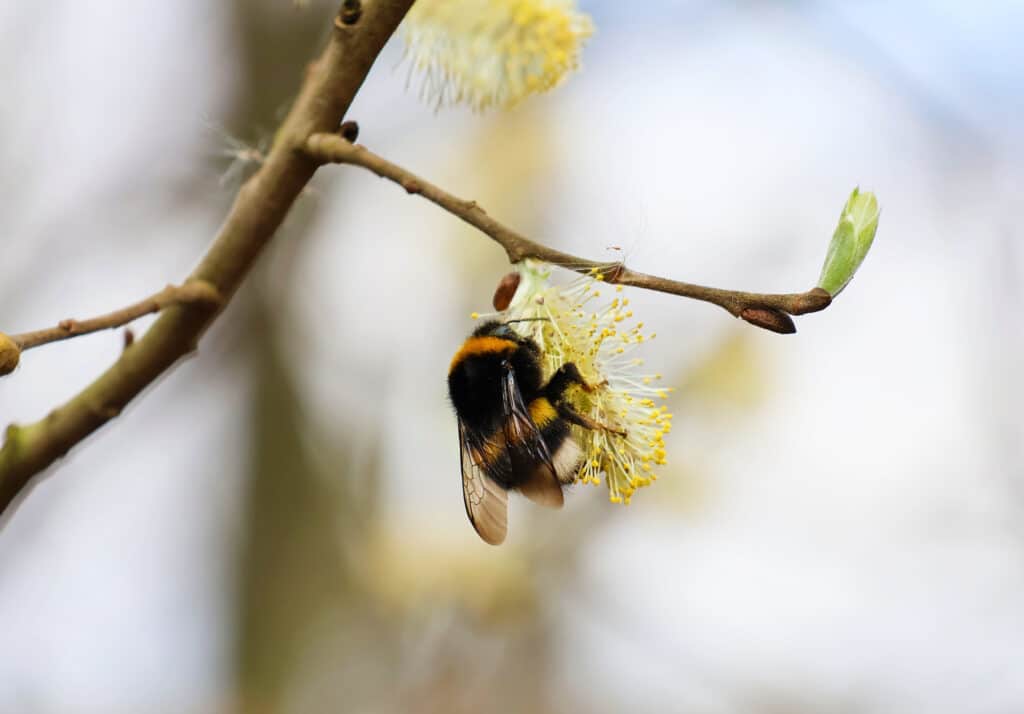
Only Local Delivery Available (Long Island & Queens)
Ground Shipping Paused
To protect our plants from extreme summer heat, we’ve paused nationwide ground shipping to avoid any damage during transit.
Local Delivery Only
We’re still delivering locally to Long Island and Queens, so nearby customers will continue to receive orders as usual.
Fall Pre-Orders Are Open Nationwide!
We will resume normal shipping for non-local orders placed during the pause in early September.
Thank you for your support and understanding—we’re looking forward to growing with you this fall!
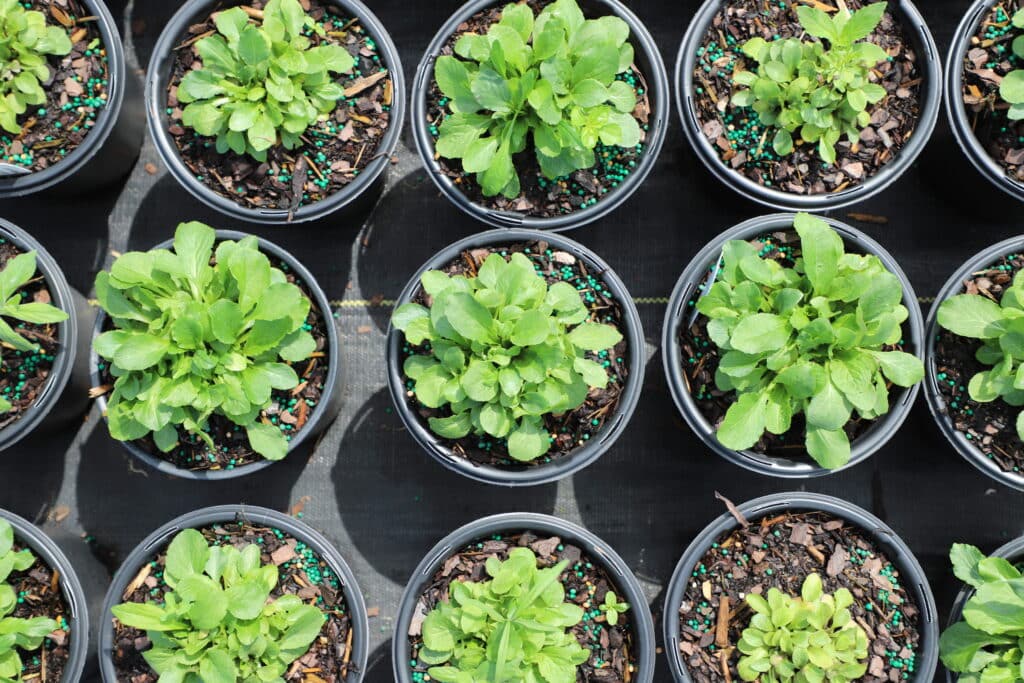
Shipping Paused
Please be aware that all shipping will be paused on December 22.
Any orders placed after that time will be fulfilled when we resume operations in January 2025.